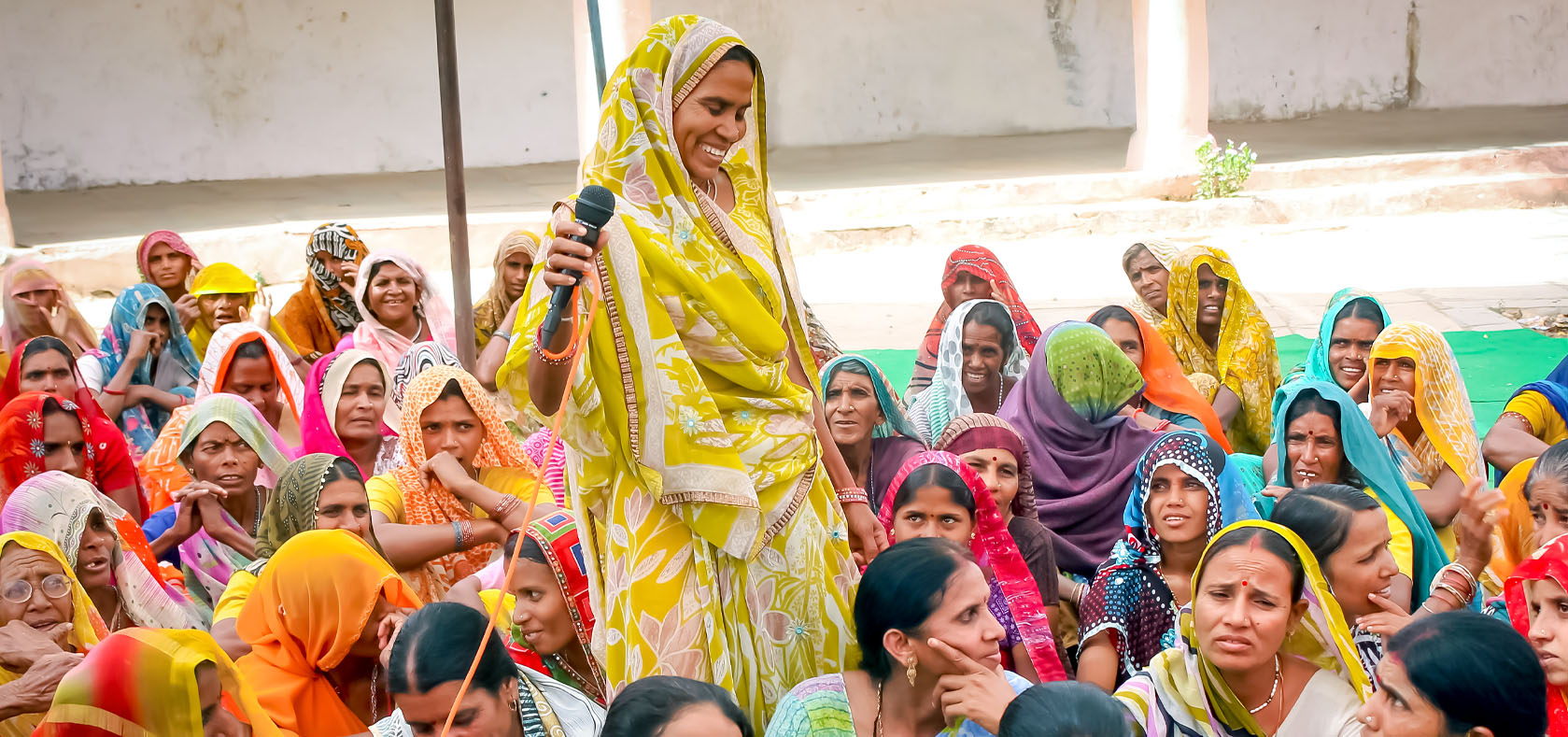A sustainable model for Women’s Leadership
A multi-pronged approach across enhancing employability, sport for leadership, and bodily autonomy is the key to strengthening leadership abilities among adolescent girls
Date:
Authors: Susan Ferguson, Cynthia Mccaffrey, Andrea Wojnar, and Mansi Thakar

This OP-ED was originally published in the Hindu on 16 March 2023
Today the world is home to a transformative generation of 900 million adolescent girls and young women poised to shape the future of work and growth. If this cohort of young women could be equipped with the right resources and opportunities to nurture the 21st century skills, they would become the largest segment of women leaders, change-makers, entrepreneurs, and innovators in history.
Given the many socio-economic barriers that adolescent girls confront from their earliest years, we believe that the work to cultivate their agency — for education systems to expose them to new age skill sets, critical thinking, and leadership qualities — must begin early.
India, home to one of the largest generations of girls and young women, has undertaken wide-ranging initiatives across the critical domains of education, health, digital and financial inclusion, leadership building, and have established feasible frameworks to help in the achievement of Sustainable Development Goal 5, which envisions the world to be a more gender equal place by 2030.
To unleash the gender dividend and create conditions for female leadership to flourish, women at all levels of society must have inclusion in Information and Communications Technology (ICT), bodily autonomy and safety, shared responsibility within the household, and equal participation in decision-making spaces.
Scaling EdTech solutions
As the access to digital technology increasingly becomes an arena of opportunity and basic service for children and young people, EdTech gives us tools to bridge part of the accessibility gap in education through hybrid learning models, even where girls’ access to schooling is restricted by harmful norms. Building and scaling up solutions customised to the language, cultural nuances, and Internet accessibility of individual communities can give girls equal access to knowledge through digital inclusion.
The World Bank notes that over 43 per cent of Indian STEM (science, technology, engineering and mathematics) graduates are women. However, not all of them are represented in the workforce and tech leadership. Although STEM education among girls appears to have picked up pace over the years, there are prevailing stereotypes that characterise it as a traditionally masculine domain.
Gender norms that disproportionately allocate domestic and care responsibilities to women, representation of men as leaders of STEM, finance, and entrepreneurial fields in the public perception, and institutional mechanisms (inadequate maternity leave, few flexible work arrangements, lack of childcare facilities in the workplace) are some of the barriers that explain why increased women’s representation in STEM education does not translate into work participation.
Actively countering these stereotypes calls for the inclusion of grade-appropriate STEM, financial education, and entrepreneurship syllabi into the educational curriculum for girls. Introducing elements such as Olympiads, innovation labs, bootcamps and competitions can expose girls to practical applications and inspire them to build solutions to challenges in their ecosystem.
Women need to be empowered to make decisions about their bodies, such as whether to have sexual relations or not, when to initiate sexual relations, to use contraceptives or not, and to seek health care when needed. They also need to be free from all forms of violence and harassment. These basic conditions are critical to enable women and young girls to chart the trajectory of their personal and professional lives. Sporting activities are synonymous with promoting leadership, self-sufficiency, and teamwork. The inclusion of adolescent girls and young women in sports can go a long way in building their self-confidence, strengthening self-belief, and imparting the nuances of teamwork. Initiatives such as the National Sports Policy, as well as inclusion programmes for children from vulnerable communities have seen remarkable success.
Redistribute care work
From domestic chores to caring for loved ones, the backbone of thriving families, communities and economies largely falls on women. It increases in times of crisis such as the COVID-19 pandemic, which starkly brought out women’s disproportionate care burden. In India, this was exacerbated owing to socio-cultural norms that relegate women to unpaid reproductive labour.
It is crucial for us to recognise, reduce and redistribute unpaid care and domestic work, so that women may enjoy economic opportunities and outcomes on an equal footing to men. Policies that provide services, social protection and basic infrastructure, promote sharing of domestic and care work between men and women, and create more paid jobs in the care economy, are urgently needed to accelerate progress on women’s economic empowerment.
A multi-pronged approach across enhancing employability, sport for leadership, digital innovations and learning, and bodily autonomy is the key to strengthening leadership abilities among adolescent girls and young women.
Nurturing girls’ leadership abilities is our collective first step towards breaking down restrictive gender norms and barriers for truly gender-transformative growth and accelerating girl-and-women-led progress across the Sustainable Development Goals for India and the world.
About the authors
Susan Ferguson is the Representative for UN Women India; Cynthia McCaffrey is the Representative for UNICEF India; Andrea M. Wojnar is the Representative for India and Country Director for Bhutan, United Nations Population Fund, and members of the UN Country Team, collectively delivering on SDGs; Mansi Thakar is a UN India's YuWaah Advocate, a part of the team of UN India.